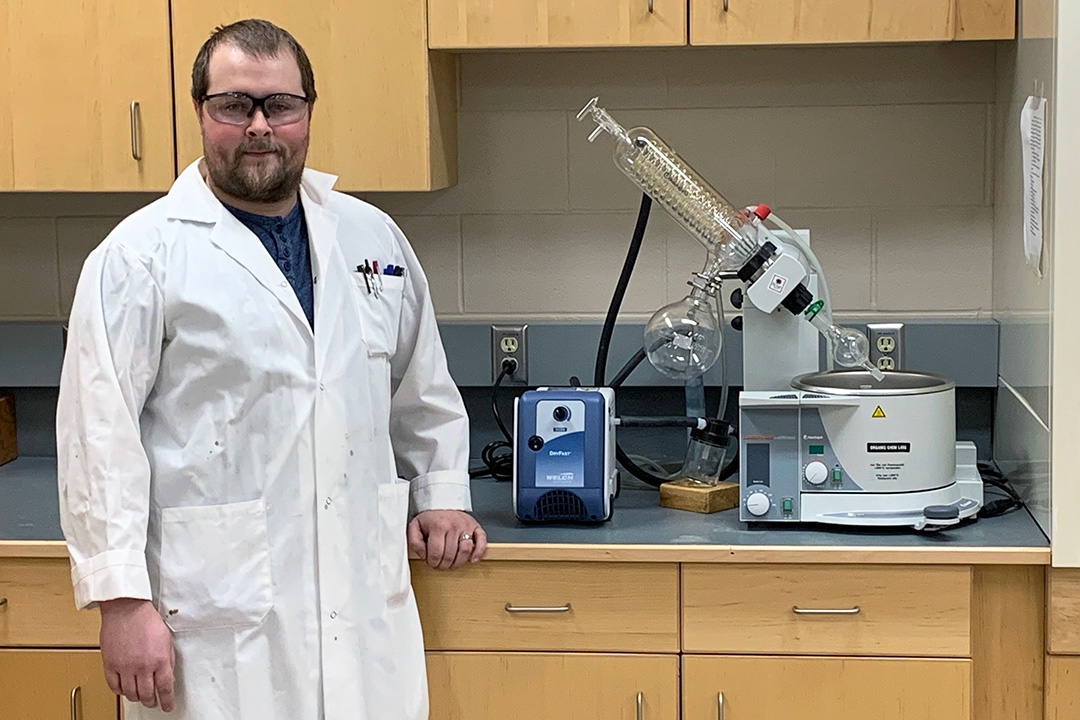
Small changes lead to big savings at USask
It’s the equivalent of showering for 540 straight days or enough water to fill three Olympic-sized swimming pools. That is how Doug Fansher, a PhD candidate in the College of Arts and Science’s Department of Chemistry at the University of Saskatchewan, described the amount of water that was being used each year by the water aspirators in his department’s labs.
By JODY GRESS“The water aspirators we used are common in labs and use the flow of water through specialized taps to generate vacuum flow for research equipment,” said Fansher. “To keep pace with the research activities happening in our labs, the taps on the water aspirators were being run at full blast for up to eight hours a day.”
Aspirators are commonly used in research labs over other options like electronic diaphragm vacuum pumps because of the relatively low upfront purchase cost. “A water aspirator may cost as little as $50 to buy, where a single electronic vacuum pump can cost several thousand,” said Fansher.
Seeing thousands of litres of spiraling down the drain motivated Fansher to find a more efficient way.
“I was introduced to the university’s Office of Sustainability Revolving Fund through a colleague in the Graduate Students Association (GSA) who had previously applied to the fund for re-useable plastic plates in the GSA Commons,” said Fansher. “Initially I was only going to apply for a grant to fund the purchase of three pumps for my supervisor’s lab, but once I started the grant application my department head encouraged me to think bigger and include the 30 plus pumps for our entire department.”
Funding for the Thorvaldson Water Aspirator Replacement project was approved by the Office of Sustainability and covered the purchase of 31 pumps at a cost of $90,000. “The replacement of 68 water aspirators with 31 new pumps within the department will result in a savings of 7.67 million litres of water and $25,000 in utility costs per year,” said Fansher. “We anticipate the initial investment cost will pay for itself within five years.”
Installation of the new pumps was relatively seamless and didn’t require any additional costs to retrofit the existing research equipment. “We were able to directly plug the new pumps in to the existing electrical and be up and running with very little interruption to the activities in the lab,” said Fansher.
Replacing the water aspirators is one of several recent university initiatives that have been funded by the Office of Sustainability’s Revolving Fund.
About the Fund
Established in 2014, the Sustainability Revolving Fund (SRF) finances sustainability initiatives at the University of Saskatchewan. Projects that result in utility savings either directly or indirectly through behaviour change on campus are funded.
A revolving fund works by reinvesting cost savings resulting from the project back into the fund. Projects that achieve direct utility or operational savings reinvest the initial funding plus an additional 50 per cent back into the fund. This ensures that the fund will continue to grow and be financed by its own efforts.
Learn more at sustainability.usask.ca.
